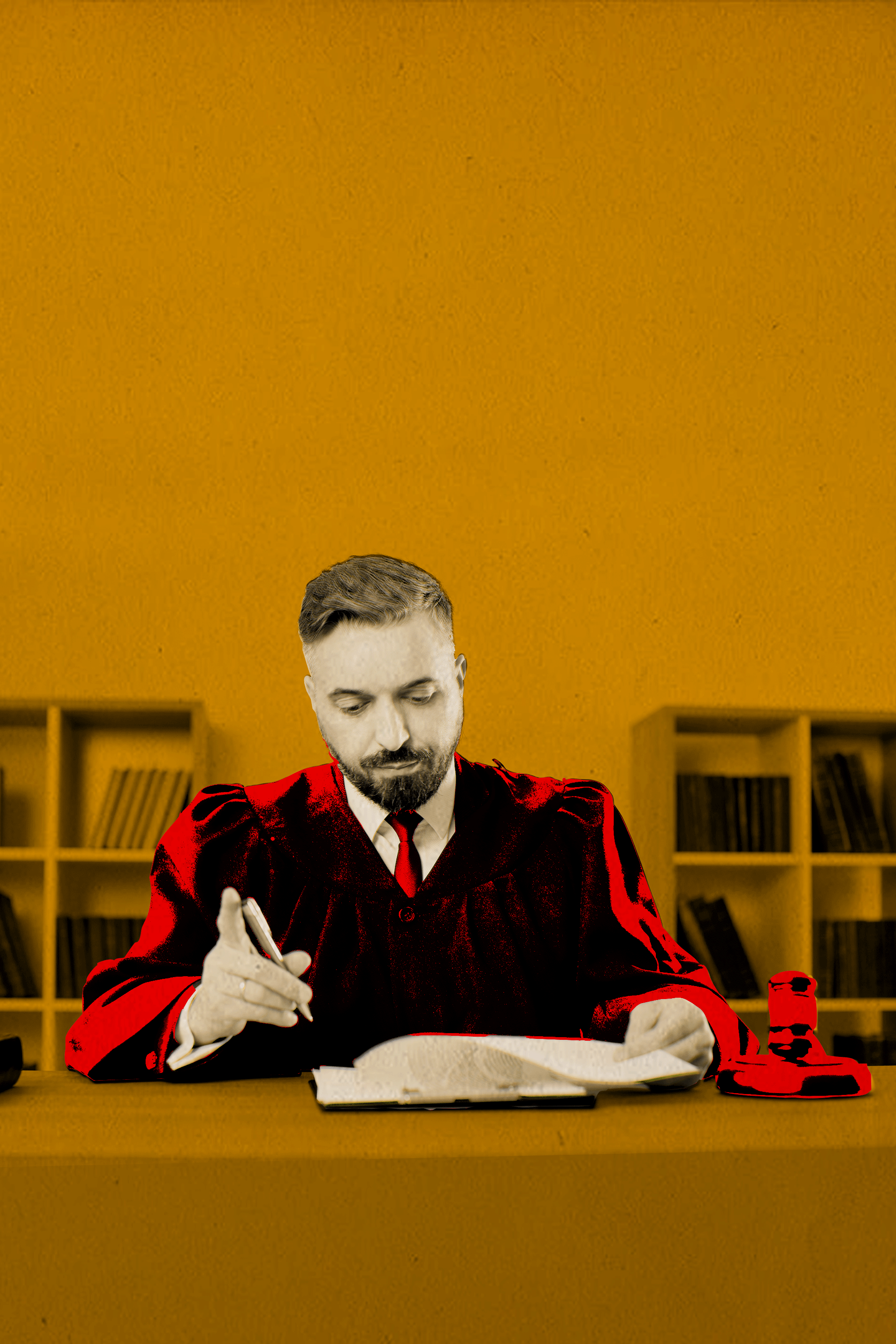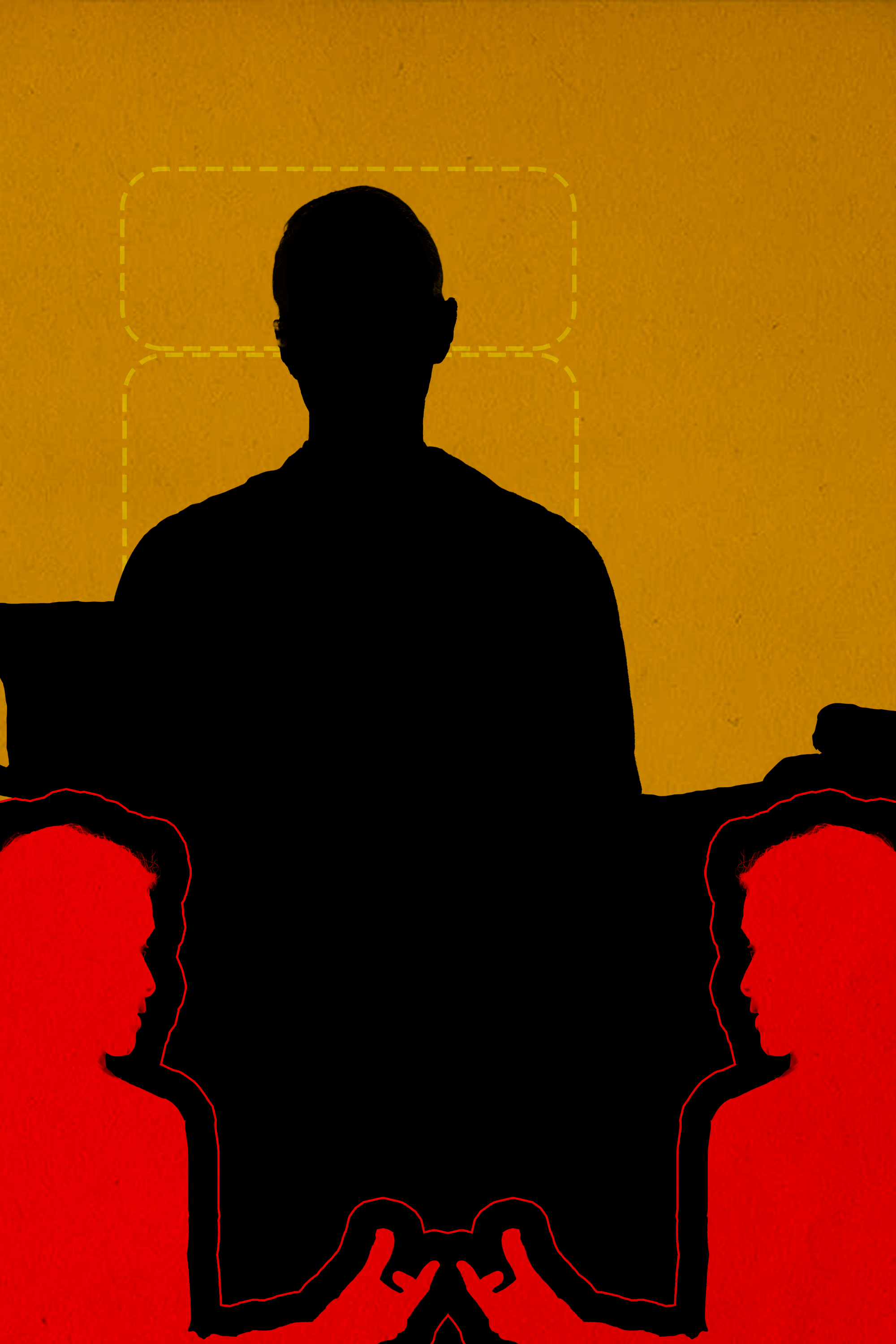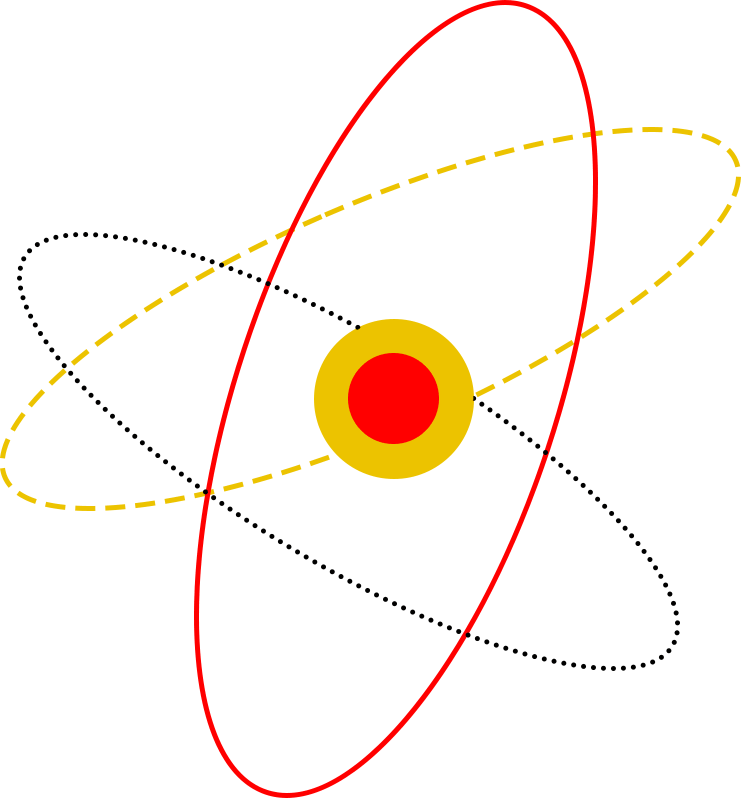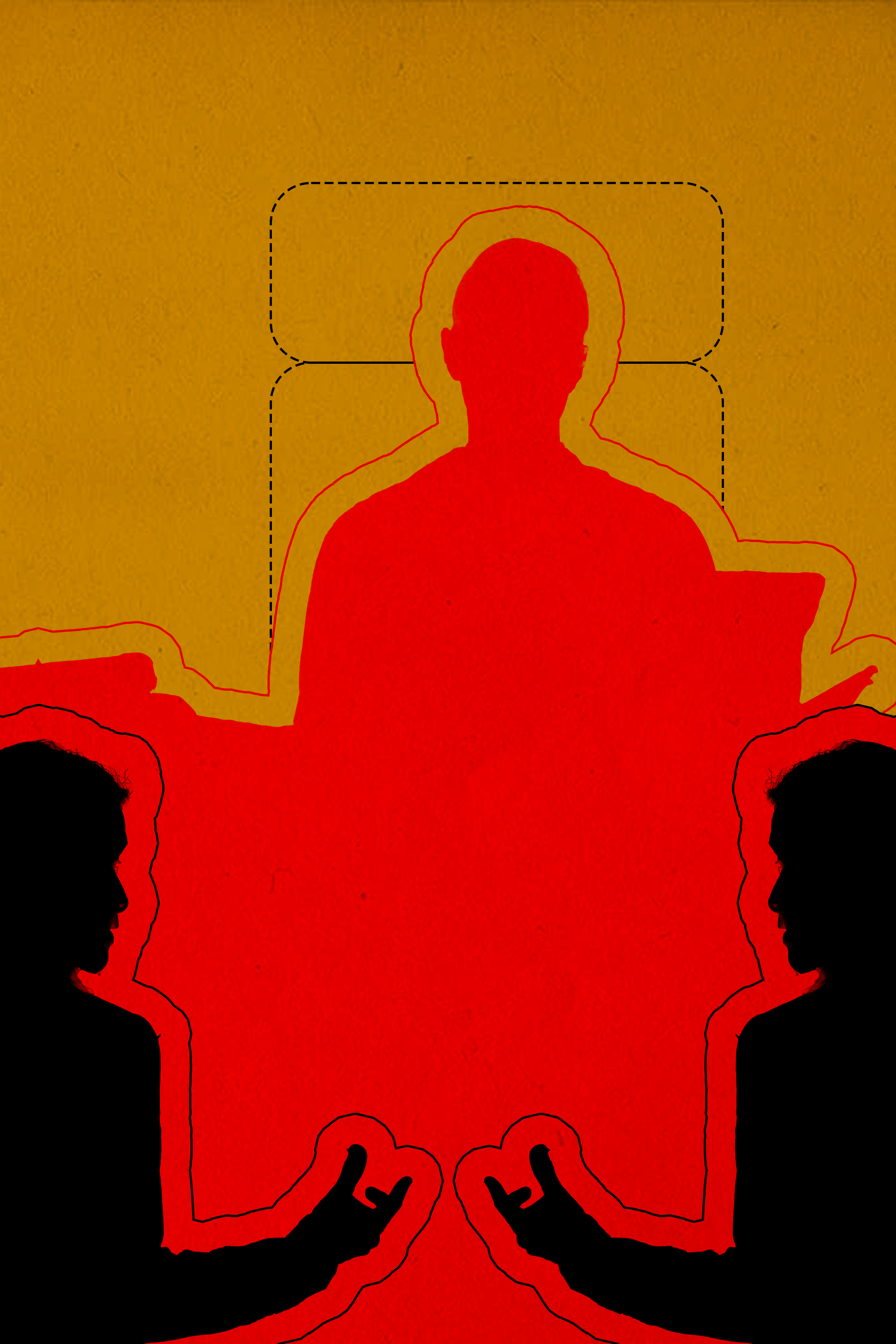Court systems around the world experience high caseloads. Many courts have found that proactive case management by individual judges helps ensure the prompt administration of justice.

This piece offers a comparative perspective on how judicial case management can be implemented in civil litigation. It includes descriptions of well-established case management practices in countries like the United Arab Emirates, England, and the United States, and case management reforms more recently adopted in other countries. While many of the case management practices described here apply to criminal litigation as well, there are aspects of criminal case management that are unique and will be addressed separately.
What is Judicial Case Management?
The core principle of judicial case management (JCM) is that the judge, rather than the parties or their lawyers, controls the pace of litigation. A judge who is an effective case manager takes charge of the case early, sets an efficient but reasonable schedule tailored to the needs of the case, maintains control by holding parties to the schedule, punctually resolves issues that could delay the case, and renders a prompt decision. Active JCM reduces case backlogs, decreases civil litigation costs, promotes public confidence in the courts, and mitigates the risk of stale or lost evidence.
Challenges
Although there are well-accepted tenets of JCM, the manner and extent to which they can be implemented vary considerably across national justice systems. JCM strategies that work in one country may need to be modified considerably to work in another. For example, a commonly adopted JCM strategy seeks to complete each trial in a single continuous hearing, and yet trial in many jurisdictions involves a series of hearings, often scheduled weeks or months apart, sometimes with the case assigned to different judges along the way. In addition, amending procedural rules to implement JCM practices can be a complex and politically fraught process in some countries, while other countries struggle with crushing case backlogs, inadequate budgets, less experienced judges, non-professional court personnel, and a recalcitrant bar.
Even with these challenges, which exist in both common law and civil law jurisdictions, JCM can help create a local legal culture where judges are responsible for and control the pace of litigation and where inefficient and wasteful practices are significantly reduced.


Case Management in Common Law Systems
Common law jurisdictions are based on an adversarial, lawyer-driven model. Lawyers obtain and present evidence and generally frame the legal issues to be decided. The judge serves as an impartial decision maker, ruling on evidence and arguments prepared and presented by the parties. When JCM is practiced, the judge — while remaining neutral — ensures efficiency by managing the pace and contours of the litigation, drawing authority from the adopted rules of procedure. The pretrial and trial phases of litigation are distinct, with trial beginning on the date set by the judge and proceeding over consecutive days until completed. Even still, there is significant variation in how JCM is implemented across common law jurisdictions.
Examples

England
Before the late twentieth century, English judges adhered to traditional notions of a lawyer-driven adversarial process. The result was inefficiency, delay, and spiraling costs, leading to widespread public criticism. To address these problems, the judiciary undertook a significant study of possible reforms in 1996, resulting in the Woolf Report, named after its principal author, Lord Harry Woolf. The Woolf Report concluded that ultimate responsibility for controlling litigation must be shifted from parties and their lawyers to judges. In response to Lord Woolf’s recommendations, English judges were accorded new and broad authority to engage in “active case management.”
Today, cases in the English courts are assigned a category or track: fast-track for straightforward cases and multi-track for complex and weighty matters. The assigned judge may facilitate settlement negotiations. If the case proceeds, the judge acts early in the litigation to identify factual and legal issues of agreement, isolate the matters that require a full trial, and summarily dispose of weak legal arguments and cases. The judge fixes and enforces strict timetables for procedural steps leading to trial and for the trial itself. In a 2009 review, Lord Rupert Jackson found that the Woolf reforms brought significant benefits to civil litigants. More cases settled early and the others proceeded to trial more swiftly.

Kenya
In 2020, Kenya amended its Civil Procedure Rules to introduce case management conferences, an update to the existing pretrial conference procedure. Before a case is certified as “ready” to proceed, parties disclose the evidence they intend to rely on during trial and file witness statements. The witness statements must be detailed and reference the evidence to be relied upon. Judges may admit these witness statements as direct evidence and limit in-court testimony to cross examination.

Sri Lanka
Sri Lanka has adopted a different approach to putting judges in charge of case processing. In 2023, it implemented a pretrial procedure developed with input from the bar, judges, the Attorney General’s Office, and the Ministry of Justice. The legislation mandates pretrial conferences in civil cases. Newly designated pretrial judges, appointed by the Judicial Services Commission from the district and magistrate bench, preside in special conference rooms. They work with the parties to enable a more efficient trial process by identifying uncontested facts and clarifying legal issues. If possible, cases may be settled during these pretrial proceedings. These case management procedures are complimented by a robust mediation system, dating back thousands of years to village councils that resolved community disputes.

Trinidad and Tobago
Judges in Trinidad and Tobago practice active JCM. The 1998 Civil Proceedings Rules set forth a case flow management protocol, and the rules are periodically supplemented by Practice Directives issued by the Chief Justice. After the pleadings phase, a formal case management conference is scheduled. The conference is presided over by a judicial officer, either a Master or High Court Judge, with authority to manage the pace and contours of the case. The presiding judge reviews preliminary submissions, assesses the merits of the case, and either revisits the possibility of settlement (which the parties must consider before filing) or directs the parties to prepare for trial. If the parties opt for settlement negotiations, they may request a different judicial officer or mediator. If the case proceeds to trial, firm deadlines are set for the production and exchange of evidence, filing legal and evidentiary objections, and submitting legal arguments. Once this is complete, a pretrial review hearing is scheduled to address interim issues that can be resolved before trial.

England
Before the late twentieth century, English judges adhered to traditional notions of a lawyer-driven adversarial process. The result was inefficiency, delay, and spiraling costs, leading to widespread public criticism. To address these problems, the judiciary undertook a significant study of possible reforms in 1996, resulting in the Woolf Report, named after its principal author, Lord Harry Woolf. The Woolf Report concluded that ultimate responsibility for controlling litigation must be shifted from parties and their lawyers to judges. In response to Lord Woolf’s recommendations, English judges were accorded new and broad authority to engage in “active case management.”
Today, cases in the English courts are assigned a category or track: fast-track for straightforward cases and multi-track for complex and weighty matters. The assigned judge may facilitate settlement negotiations. If the case proceeds, the judge acts early in the litigation to identify factual and legal issues of agreement, isolate the matters that require a full trial, and summarily dispose of weak legal arguments and cases. The judge fixes and enforces strict timetables for procedural steps leading to trial and for the trial itself. In a 2009 review, Lord Rupert Jackson found that the Woolf reforms brought significant benefits to civil litigants. More cases settled early and the others proceeded to trial more swiftly.

Kenya
In 2020, Kenya amended its Civil Procedure Rules to introduce case management conferences, an update to the existing pretrial conference procedure. Before a case is certified as “ready” to proceed, parties disclose the evidence they intend to rely on during trial and file witness statements. The witness statements must be detailed and reference the evidence to be relied upon. Judges may admit these witness statements as direct evidence and limit in-court testimony to cross examination.

Sri Lanka
Sri Lanka has adopted a different approach to putting judges in charge of case processing. In 2023, it implemented a pretrial procedure developed with input from the bar, judges, the Attorney General’s Office, and the Ministry of Justice. The legislation mandates pretrial conferences in civil cases. Newly designated pretrial judges, appointed by the Judicial Services Commission from the district and magistrate bench, preside in special conference rooms. They work with the parties to enable a more efficient trial process by identifying uncontested facts and clarifying legal issues. If possible, cases may be settled during these pretrial proceedings. These case management procedures are complimented by a robust mediation system, dating back thousands of years to village councils that resolved community disputes.

Trinidad and Tobago
Judges in Trinidad and Tobago practice active JCM. The 1998 Civil Proceedings Rules set forth a case flow management protocol, and the rules are periodically supplemented by Practice Directives issued by the Chief Justice. After the pleadings phase, a formal case management conference is scheduled. The conference is presided over by a judicial officer, either a Master or High Court Judge, with authority to manage the pace and contours of the case. The presiding judge reviews preliminary submissions, assesses the merits of the case, and either revisits the possibility of settlement (which the parties must consider before filing) or directs the parties to prepare for trial. If the parties opt for settlement negotiations, they may request a different judicial officer or mediator. If the case proceeds to trial, firm deadlines are set for the production and exchange of evidence, filing legal and evidentiary objections, and submitting legal arguments. Once this is complete, a pretrial review hearing is scheduled to address interim issues that can be resolved before trial.

United States (Federal)
Before the emergence of JCM in the United States, lawyers and their clients largely controlled the pace of litigation, often resulting in undue delay and cost. For many years efforts to increase court efficiency focused on matters such as court structure, court resources, and rules of procedure, with little effect on backlogs and case processing times. Beginning in the 1970s, attention shifted to the judge’s role in managing cases. A 1978 study of 22 different U.S. trial courts sought to distinguish efficient courts from inefficient courts. Interestingly, the researchers found that efficiency was not determined by a court’s size, its resources, or even the number of cases assigned to each judge. Instead, the critical factor was the behavior of judges and the expectations of attorneys, a phenomenon the researchers called the “local legal culture.”
The report made recommendations on how to establish a “local legal culture” of efficient case processing and became the basis for modern JCM in the federal courts. Judges are now empowered to control the progress of cases, implement a firm case event schedule, establish a firm trial date as a means to induce settlements, and preside over the entire span of a case from beginning to end (the “individual calendar” method).
Admittedly, the United States federal judiciary has advantages that support effective JCM: adequate funding, experienced judges, professional administrative staff, sophisticated automation, attorneys who respect judicial authority, and robust rules of civil procedure. Rule 16 of the Federal Rules of Civil Procedure allows an active case managing judge to take early control of a civil case during an initial case management conference, setting a schedule for completion of litigation and then holding the parties to that schedule. Most states court systems have adopted similar procedural rules.
Click Here: Judicial Case Management in the United States
The Federal Rules of Civil Procedure embrace JCM, but judges should tailor the process to meet the needs of each case. Here are some of the key elements:
Individual Dockets and Case Assignment
Under an individual docketing system, a case is assigned to a specific judge at initial filing or the close of pleadings and remains with that judge until final disposition. The assigned judge is accountable for the pace and eventual resolution the case. Information on the case docket is used to monitor progress and avoid delay.
Early Intervention
The judge intervenes early in the case and exercises consistent control over its progress. This usually happens in an initial case management conference called by the judge, and through issuance of a detailed scheduling order based on the needs of the case.
Before holding the initial conference, the parties file a joint report setting forth relevant information such as the nature of the case, its jurisdictional basis, the issues in dispute, the fact gathering needed to prepare the case for trial, a proposed schedule for completion of the litigation, legal issues the court must resolve before trial, whether expert witnesses will be used, the estimated length of trial, potential trial dates, and the prospects for settlement.
At the initial case management conference, the judge not only addresses the needs of the case and sets a schedule for completion of relevant tasks but can also take steps to facilitate efficient resolution. These can include:
- Assisting parties to narrow the issues to be resolved
- Addressing preliminary legal issues
- Determining whether experts are truly needed and on what specific issues
- Ensuring that the collection of evidence proceeds efficiently and is proportional to the needs of the case
- Discussing prospects for settlement and whether an early mediation would be useful
Continuing Control of Case Progress
Following the initial conference and issuance of a case scheduling order, the judge enforces the schedule unless there is a good reason to modify it. Parties generally cannot extend the case management schedule on their own agreement. Judges usually require a showing of good cause to modify the schedule. The good cause inquiry focuses on whether the existing schedule could have been met through reasonable diligence by the party seeking the extension. If that party has not been diligent in meeting the schedule, good cause to extend it does not exist. This good case standard encourages diligence and discourages time-wasting.
In more complex matters, judges may hold periodic case management conferences to ensure that the case is progressing as scheduled. The conferences can be used to manage discovery, discuss contemplated motions to narrow issues before briefing, set a firm and credible trial date, and explore settlement opportunities.
Promptly resolving disputes that could delay the case is key to effective case management. Some judges attempt to resolve evidentiary disputes through direct discussions with attorneys rather than through the filing of lengthy briefs and legal arguments. This often results in quick resolution of evidentiary disputes and encourages the parties to resolve disputes on their own.
Trial Planning and Preparation
Judges usually hold a final pretrial conference before trial. Lawyers who will try the case, or the parties if unrepresented, are required to participate. Before the conference, lawyers or unrepresented parties submit a proposed final pretrial order that addresses the following issues:
- The contested factual issues to be resolved at trial
- Stipulations of fact upon which the parties agree
- Legal issues that must be resolved in connection with the trial
- A list of witnesses who will testify for each side
- A list of exhibits to be used at trial and any objections to those exhibits
- Motions to preclude evidence, including expert testimony
- The estimated length of trial and available procedures for expediting the trial
With this filing in hand, the judge discusses the trial with the parties and issues a final pretrial order. The order acts as a blueprint for the trial. It identifies the issues to be tried, the witnesses and exhibits to be offered in evidence, and the legal matters that must be resolved. The judge sets or confirms the trial date and reserves enough days to complete the trial in a single continuous proceeding. The final pretrial order governs the conduct of the trial, ensures that the parties are prepared to address all relevant issues, and eliminates surprise. It can be modified only to prevent manifest injustice. Such an order helps ensure that last-minute issues or evidence will not force postponement of the trial.
Judges use final pretrial conferences to inquire about the possibility of settlement or encourage the parties to engage in settlement talks after the conference and before trial.
To ensure that the trial proceeds in a fair and efficient manner, the judge holds the parties to the trial time allotted in the order and discourages interruptions.

United States (Federal)
Before the emergence of JCM in the United States, lawyers and their clients largely controlled the pace of litigation, often resulting in undue delay and cost. For many years efforts to increase court efficiency focused on matters such as court structure, court resources, and rules of procedure, with little effect on backlogs and case processing times. Beginning in the 1970s, attention shifted to the judge’s role in managing cases. A 1978 study of 22 different U.S. trial courts sought to distinguish efficient courts from inefficient courts. Interestingly, the researchers found that efficiency was not determined by a court’s size, its resources, or even the number of cases assigned to each judge. Instead, the critical factor was the behavior of judges and the expectations of attorneys, a phenomenon the researchers called the “local legal culture.”
The report made recommendations on how to establish a “local legal culture” of efficient case processing and became the basis for modern JCM in the federal courts. Judges are now empowered to control the progress of cases, implement a firm case event schedule, establish a firm trial date as a means to induce settlements, and preside over the entire span of a case from beginning to end (the “individual calendar” method).
Admittedly, the United States federal judiciary has advantages that support effective JCM: adequate funding, experienced judges, professional administrative staff, sophisticated automation, attorneys who respect judicial authority, and robust rules of civil procedure. Rule 16 of the Federal Rules of Civil Procedure allows an active case managing judge to take early control of a civil case during an initial case management conference, setting a schedule for completion of litigation and then holding the parties to that schedule. Most states court systems have adopted similar procedural rules.
Click Here: Judicial Case Management in the United States
The Federal Rules of Civil Procedure embrace JCM, but judges should tailor the process to meet the needs of each case. Here are some of the key elements:
Individual Dockets and Case Assignment
Under an individual docketing system, a case is assigned to a specific judge at initial filing or the close of pleadings and remains with that judge until final disposition. The assigned judge is accountable for the pace and eventual resolution the case. Information on the case docket is used to monitor progress and avoid delay.
Early Intervention
The judge intervenes early in the case and exercises consistent control over its progress. This usually happens in an initial case management conference called by the judge, and through issuance of a detailed scheduling order based on the needs of the case.
Before holding the initial conference, the parties file a joint report setting forth relevant information such as the nature of the case, its jurisdictional basis, the issues in dispute, the fact gathering needed to prepare the case for trial, a proposed schedule for completion of the litigation, legal issues the court must resolve before trial, whether expert witnesses will be used, the estimated length of trial, potential trial dates, and the prospects for settlement.
At the initial case management conference, the judge not only addresses the needs of the case and sets a schedule for completion of relevant tasks but can also take steps to facilitate efficient resolution. These can include:
- Assisting parties to narrow the issues to be resolved
- Addressing preliminary legal issues
- Determining whether experts are truly needed and on what specific issues
- Ensuring that the collection of evidence proceeds efficiently and is proportional to the needs of the case
- Discussing prospects for settlement and whether an early mediation would be useful
Continuing Control of Case Progress
Following the initial conference and issuance of a case scheduling order, the judge enforces the schedule unless there is a good reason to modify it. Parties generally cannot extend the case management schedule on their own agreement. Judges usually require a showing of good cause to modify the schedule. The good cause inquiry focuses on whether the existing schedule could have been met through reasonable diligence by the party seeking the extension. If that party has not been diligent in meeting the schedule, good cause to extend it does not exist. This good case standard encourages diligence and discourages time-wasting.
In more complex matters, judges may hold periodic case management conferences to ensure that the case is progressing as scheduled. The conferences can be used to manage discovery, discuss contemplated motions to narrow issues before briefing, set a firm and credible trial date, and explore settlement opportunities.
Promptly resolving disputes that could delay the case is key to effective case management. Some judges attempt to resolve evidentiary disputes through direct discussions with attorneys rather than through the filing of lengthy briefs and legal arguments. This often results in quick resolution of evidentiary disputes and encourages the parties to resolve disputes on their own.
Trial Planning and Preparation
Judges usually hold a final pretrial conference before trial. Lawyers who will try the case, or the parties if unrepresented, are required to participate. Before the conference, lawyers or unrepresented parties submit a proposed final pretrial order that addresses the following issues:
- The contested factual issues to be resolved at trial
- Stipulations of fact upon which the parties agree
- Legal issues that must be resolved in connection with the trial
- A list of witnesses who will testify for each side
- A list of exhibits to be used at trial and any objections to those exhibits
- Motions to preclude evidence, including expert testimony
- The estimated length of trial and available procedures for expediting the trial
With this filing in hand, the judge discusses the trial with the parties and issues a final pretrial order. The order acts as a blueprint for the trial. It identifies the issues to be tried, the witnesses and exhibits to be offered in evidence, and the legal matters that must be resolved. The judge sets or confirms the trial date and reserves enough days to complete the trial in a single continuous proceeding. The final pretrial order governs the conduct of the trial, ensures that the parties are prepared to address all relevant issues, and eliminates surprise. It can be modified only to prevent manifest injustice. Such an order helps ensure that last-minute issues or evidence will not force postponement of the trial.
Judges use final pretrial conferences to inquire about the possibility of settlement or encourage the parties to engage in settlement talks after the conference and before trial.
To ensure that the trial proceeds in a fair and efficient manner, the judge holds the parties to the trial time allotted in the order and discourages interruptions.
Case Management in Civil Law Systems
Most of Europe, the Middle East, Central and South America, and parts of Asia and Africa follow the civil law tradition. The civil law system is a judge-driven process. Judges guide fact-finding, work with the parties and their lawyers to frame legal issues, and tailor proceedings to the specific issues in the case. In many civil law countries, there is no distinct pretrial phase or discovery process, and the “trial” often unfolds over weeks or months in a series of hearings. The judge is responsible for gathering and evaluating evidence, calling and questioning witnesses, and selecting experts.
Even though civil law judges have always had a significant role in directing case progress, modern JCM practices have been embraced by many civil law countries, particularly in Europe, as a means to increase court efficiency. In 2021, the International Institute for the Unification of Private Law (“UNIDROIT”) and the European Law Institute produced the Model European Rules of Civil Procedure — rules that fully embrace JCM. These model rules provide an excellent example of how JCM principles can be incorporated into a civil law system.

Click Here: Model European Rules of Civil Procedure
The Model Rules can apply to the resolution of domestic and cross-border disputes in most civil matters and contain many JCM principles. Rules 2 and 6 require the parties, their lawyers, and the judge to cooperate to promote the fair, efficient, proportionate, and speedy resolution of the case.
Duty to Cooperate
Once the case is filed, Rule 51 requires the parties to collaboratively clarify or narrow the legal and factual issues in dispute, identify relevant evidence to facilitate effective and early assessment of the merits, consider a possible schedule for the case, and estimate its potential cost.
General Case Management Duties
Rule 4 describes the judge’s responsibility for active and effective case management. Judges are required to monitor party compliance throughout the case. Comments to the rules note that the judge cannot fulfill case management duties without party cooperation.
Rule 5 states that the judge must ensure that the case resolution process is proportionate to the needs of the case by considering its nature, importance, value, and complexity. Approaches to proportionality can include the use of written procedures in place of oral hearings; assignment of cases to appropriate procedural tracks (i.e., a fast or multi-track); and limitations on evidence-taking, the length of hearings, and the number of experts.
Under Rule 10, the judge may facilitate settlement at any stage of the case, even during the preparatory phase of the case and at case management conferences. The judge may actively participate in settlement attempts and assist the parties in reaching a consensual resolution.
Control of the Case
To effectively control case progress, the parties must provide the judge with relevant information in a timely fashion. Rule 47 requires parties to present their claims, defenses, factual allegations, and offers of evidence as early and completely as possible in order to expedite proceedings. Rule 48 makes clear that the judge must monitor whether the parties and their lawyers comply with Rule 47 and any case management orders. The parties’ failure to fulfill their duties properly and in a timely fashion may result in sanctions or other adverse consequences arising from the non-compliance.
Means of Case Management During the Interim Phase
There are three stages of case management: the written pleading phase (Rules 52-60); the interim phase designed to prepare the case for final determination (Rules 49-50 and 61-63); and the final hearing phase (Rule 64). In each phase, the judge has a responsibility to actively manage the case to ensure a fair, efficient, and speedy resolution.
Rule 49 provides that where necessary for the proper management of the case, the judge should:
- Encourage the parties to take active steps to settle their dispute
- Schedule case management conferences
- Set deadlines for all procedural steps to be taken
- Limit the number and length of future submissions
- Determine the order in which issues should be resolved
- Consider changes related to the parties and amendments to pleadings
- Address the availability, exchange, and admissibility of evidence
In many civil law countries, there is no effective mechanism to generate, modify, or revoke court orders. Rule 50 of the Model Rules addresses this problem. It grants the judge discretion to issue or revoke any case management order and to reject the parties’ stipulated schedule for “good reason.”
Rule 61 authorizes the judge to hold an early case management conference during the interim phase of the case, and, if necessary, further conferences as the case progresses. When appropriate, the court should provide the parties with advice relevant to their preparation for the final hearing.
The judge should issue a case management order during or immediately after the early case management conference. The order should establish deadlines for parties to complete their procedural obligations and set a schedule for a final hearing.
Under Rule 62, the judge may take appropriate measures for the disclosure and taking of evidence before the final hearing, particularly with respect to:
- Mutual exchange of documents
- Requests for written witness statements and their exchange
- Experts appointed by the judge or the parties
- Requests for information from third parties
- Personal inspection of evidence by the judge
The interim phase serves to inform the parties and enable them to prepare for a final hearing. It also enables the judge to anticipate or reduce evidence-taking in the final hearing.
Pursuant to Rule 63, the judge will close the proceedings and schedule the case for a final hearing once the parties have had a reasonable opportunity to present their case during the interim phase and the judge has had an opportunity to clarify issues and take relevant evidence.
Final Hearing
Because piecemeal proceedings with a series of separate hearings results in inefficiency and delay, Rule 64 calls for a concentrated final hearing. The judge must require each party or an informed representative to be present at the hearing and determine the order in which issues are to be tried and evidence is to be taken. Relevant evidence not received by the judge during the interim phase may be taken in the final hearing, and the judge should take oral evidence on seriously disputed issues. To avoid surprise, evidence must have been disclosed to all other parties prior to the final hearing and oral evidence may be taken only if prior notice has been given to all parties.
Examples

Brazil
Civil procedure in many Latin American countries tends to be rigid and legalistic, with tight procedural regulations that inhibit judicial discretion and limit judicial authority over case management. Even though Article 5 of Brazil’s Federal Constitution mandates that judicial proceedings be of “reasonable duration,” Brazil’s judicial system experiences significant case backlog.
In 2016, Brazil made changes to its Civil Procedure Code to expedite proceedings through greater procedural flexibility and more judicial control. There is a new category of fast-track proceedings and judges are required to attempt conciliation and mediation. Litigation is segmented into distinct phases. After pleadings, there is an ‘organization’ phase during which the judge presides over a hearing to assess whether settlement is possible. If not, the judge rules on preliminary issues, identifies disputed questions, discusses the production of evidence with the parties, and sets deadlines for subsequent phases. During the ‘evidentiary’ phase, parties present evidence, witness testimony, expert reports, and documents. This is followed by distinct phases for final argument, judgment, and enforcement.

Japan
While courts in Japan do not employ specific pretrial procedures and there is no distinct pretrial phase of litigation, judges have authority to proactively guide party preparation and request the early production of evidence. They also may offer preliminary and interim views on issues of fact and law to encourage settlement discussions.
During the first court hearing, parties submit their claims. Factual and legal arguments are made during subsequent hearings. After identifying the material issues in dispute, the judge schedules an evidentiary hearing. Oral testimony is taken, and judges have authority to call supplemental witnesses. The judge closes the hearing process once the judge determines there is enough evidence submitted to pass judgment.

Norway
Norway’s 2005 Dispute Act codified JCM practices and requires judges to proactively manage cases. The preparatory stage of litigation is critical and facilitates early identification of disputed areas of law and fact. The judge is responsible for promoting clarification of all legal and evidentiary issues and determining whether expert testimony will be needed.
This preparatory phase typically concludes six months after the case is filed. The parties, claims, grounds, and evidence are deemed fixed. While the content of evidence may evolve and claims may be adjusted, neither may be significantly altered. When the main hearing is scheduled, parties may choose to hold proceedings orally, in writing, or both. Two weeks before the main hearing, parties submit closing submissions with detailed accounts of the claims and evidence. From that point forward, the case is ‘fixed’ and changes are precluded. Evidence and arguments are presented at a single main hearing held over consecutive days.
It should be noted that Norwegian civil procedure follows the Scandinavian model of emphasizing early settlement. This tradition dates back to the 18th century Conciliation Boards that provided a venue for citizens to resolve disputes without counsel. This tradition continues for small claims and Norway has one of the lowest civil case filings in Europe. Litigation is considered the option of last resort.

United Arab Emirates
Judges in the United Arab Emirates (UAE) have an inquisitorial role with discretion to adopt procedures they deem appropriate to each case. Judges are responsible for determining the facts, often referring the case for further investigation and/or review by court-appointed experts. Proceedings are primarily based on written pleadings and documentary evidence. Although oral hearings are the exception, if they are held, the judge controls the presentation of evidence and witness testimony and questions the parties.
For the majority of cases, there is no pretrial procedure. After a claim is filed, a hearing is scheduled before a judge within 10 days of service of process. The expectation is that all documents are filed in advance of this hearing. If a party fails to do so and an adjournment is required, the court may impose a fine. Failure to appear at a court date may result in dismissal of the action. Adjournments are granted on a limited basis and for not more than two weeks.
In 2021, the Dubai Court of First Instance introduced a new pretrial conference procedure requiring a judge-led proceeding during which parties discuss settlement, narrow the scope of disputed issues, reach agreement on the exchange of expert reports and documents, and set a timetable for all case submissions.
Additionally, the UAE created a Case Management Office in 1992 to manage non-substantive aspects of civil litigation including registering cases, serving notices, and facilitating the exchange of the parties’ memoranda and expert reports. There is also an extensive e-Justice system and many less complex disputes are resolved electronically through online portals. And there are well-established mediation and conciliation centers, including one specifically for commercial dispute resolution.

Brazil
Civil procedure in many Latin American countries tends to be rigid and legalistic, with tight procedural regulations that inhibit judicial discretion and limit judicial authority over case management. Even though Article 5 of Brazil’s Federal Constitution mandates that judicial proceedings be of “reasonable duration,” Brazil’s judicial system experiences significant case backlog.
In 2016, Brazil made changes to its Civil Procedure Code to expedite proceedings through greater procedural flexibility and more judicial control. There is a new category of fast-track proceedings and judges are required to attempt conciliation and mediation. Litigation is segmented into distinct phases. After pleadings, there is an ‘organization’ phase during which the judge presides over a hearing to assess whether settlement is possible. If not, the judge rules on preliminary issues, identifies disputed questions, discusses the production of evidence with the parties, and sets deadlines for subsequent phases. During the ‘evidentiary’ phase, parties present evidence, witness testimony, expert reports, and documents. This is followed by distinct phases for final argument, judgment, and enforcement.

Japan
While courts in Japan do not employ specific pretrial procedures and there is no distinct pretrial phase of litigation, judges have authority to proactively guide party preparation and request the early production of evidence. They also may offer preliminary and interim views on issues of fact and law to encourage settlement discussions.
During the first court hearing, parties submit their claims. Factual and legal arguments are made during subsequent hearings. After identifying the material issues in dispute, the judge schedules an evidentiary hearing. Oral testimony is taken, and judges have authority to call supplemental witnesses. The judge closes the hearing process once the judge determines there is enough evidence submitted to pass judgment.

Norway
Norway’s 2005 Dispute Act codified JCM practices and requires judges to proactively manage cases. The preparatory stage of litigation is critical and facilitates early identification of disputed areas of law and fact. The judge is responsible for promoting clarification of all legal and evidentiary issues and determining whether expert testimony will be needed.
This preparatory phase typically concludes six months after the case is filed. The parties, claims, grounds, and evidence are deemed fixed. While the content of evidence may evolve and claims may be adjusted, neither may be significantly altered. When the main hearing is scheduled, parties may choose to hold proceedings orally, in writing, or both. Two weeks before the main hearing, parties submit closing submissions with detailed accounts of the claims and evidence. From that point forward, the case is ‘fixed’ and changes are precluded. Evidence and arguments are presented at a single main hearing held over consecutive days.
It should be noted that Norwegian civil procedure follows the Scandinavian model of emphasizing early settlement. This tradition dates back to the 18th century Conciliation Boards that provided a venue for citizens to resolve disputes without counsel. This tradition continues for small claims and Norway has one of the lowest civil case filings in Europe. Litigation is considered the option of last resort.

United Arab Emirates
Judges in the United Arab Emirates (UAE) have an inquisitorial role with discretion to adopt procedures they deem appropriate to each case. Judges are responsible for determining the facts, often referring the case for further investigation and/or review by court-appointed experts. Proceedings are primarily based on written pleadings and documentary evidence. Although oral hearings are the exception, if they are held, the judge controls the presentation of evidence and witness testimony and questions the parties.
For the majority of cases, there is no pretrial procedure. After a claim is filed, a hearing is scheduled before a judge within 10 days of service of process. The expectation is that all documents are filed in advance of this hearing. If a party fails to do so and an adjournment is required, the court may impose a fine. Failure to appear at a court date may result in dismissal of the action. Adjournments are granted on a limited basis and for not more than two weeks.
In 2021, the Dubai Court of First Instance introduced a new pretrial conference procedure requiring a judge-led proceeding during which parties discuss settlement, narrow the scope of disputed issues, reach agreement on the exchange of expert reports and documents, and set a timetable for all case submissions.
Additionally, the UAE created a Case Management Office in 1992 to manage non-substantive aspects of civil litigation including registering cases, serving notices, and facilitating the exchange of the parties’ memoranda and expert reports. There is also an extensive e-Justice system and many less complex disputes are resolved electronically through online portals. And there are well-established mediation and conciliation centers, including one specifically for commercial dispute resolution.
